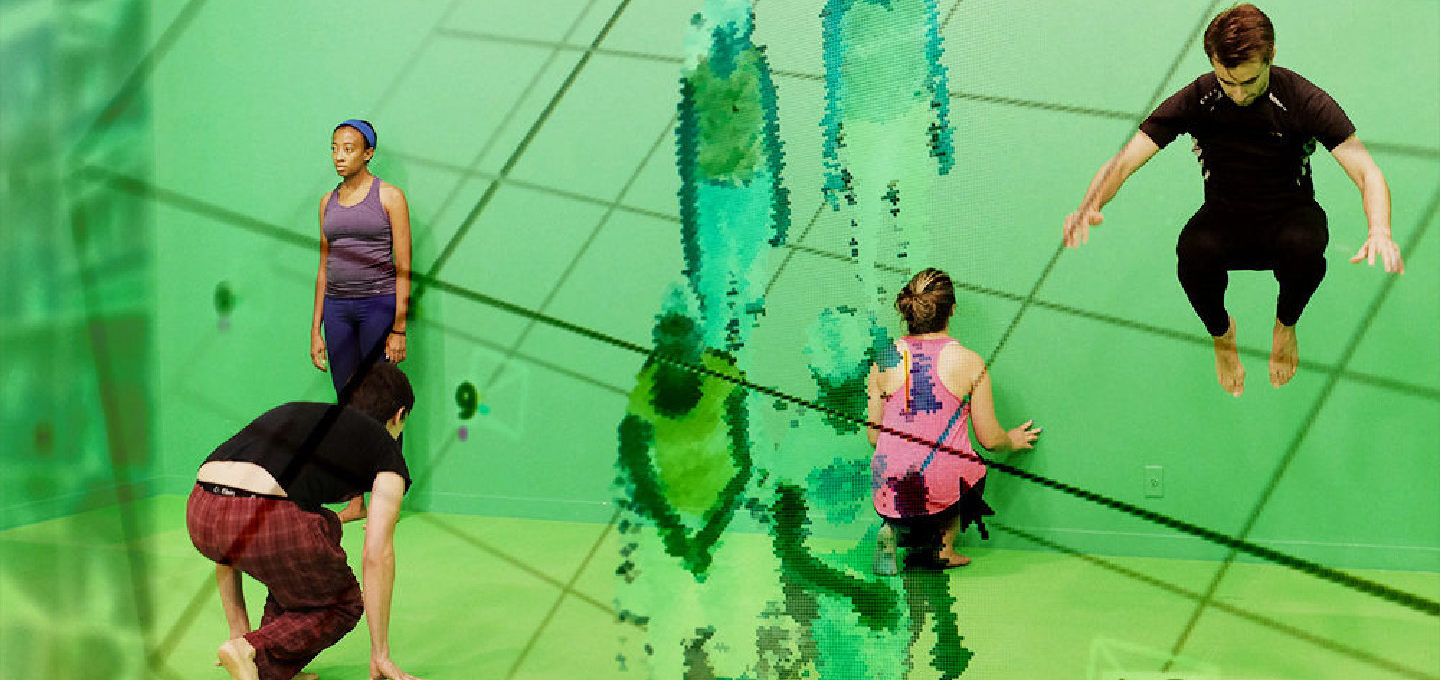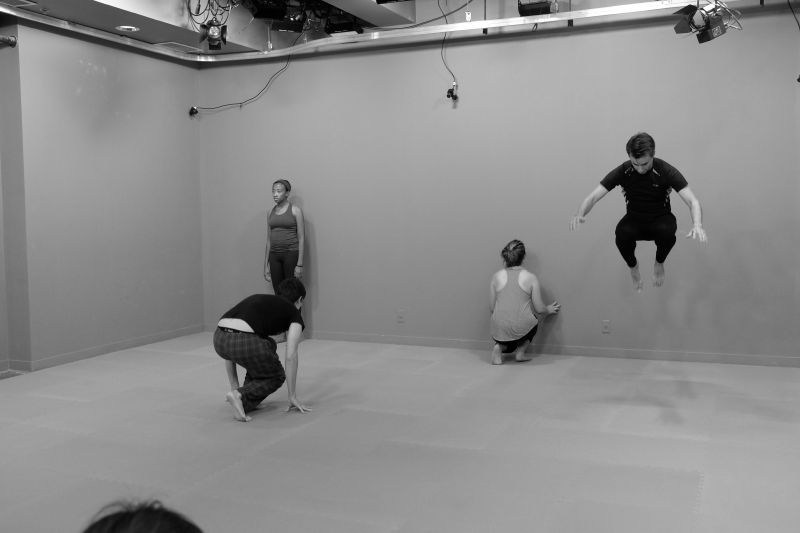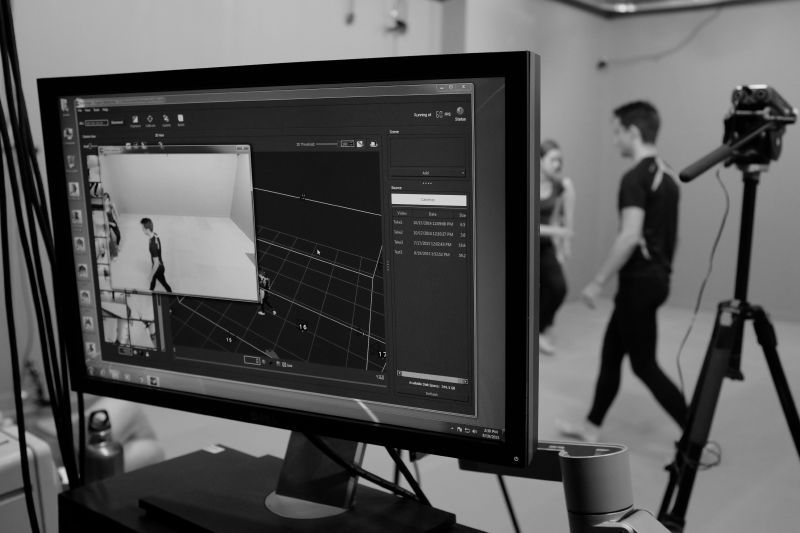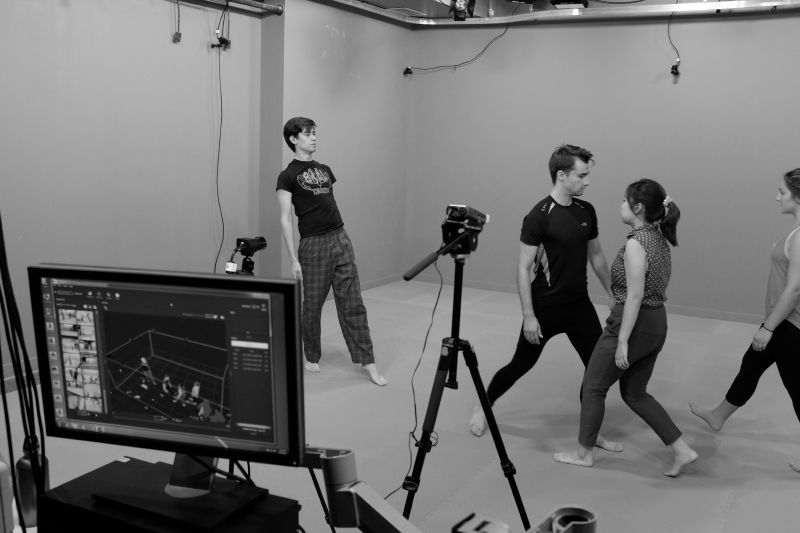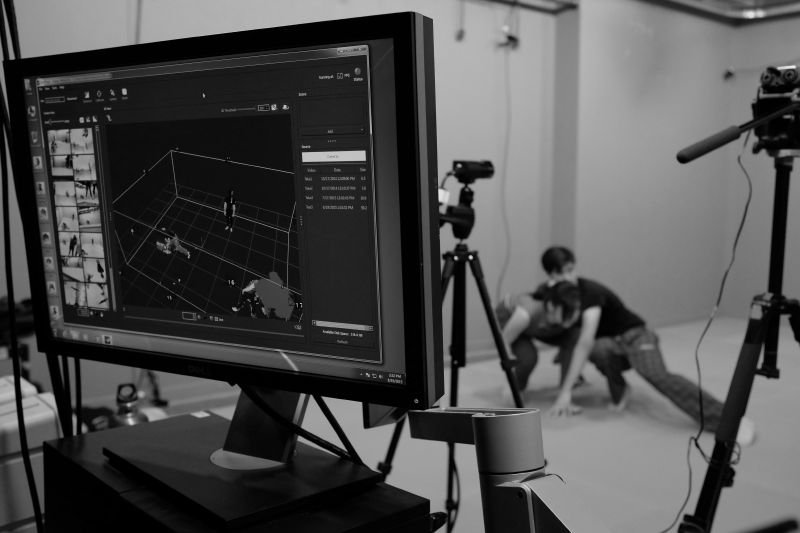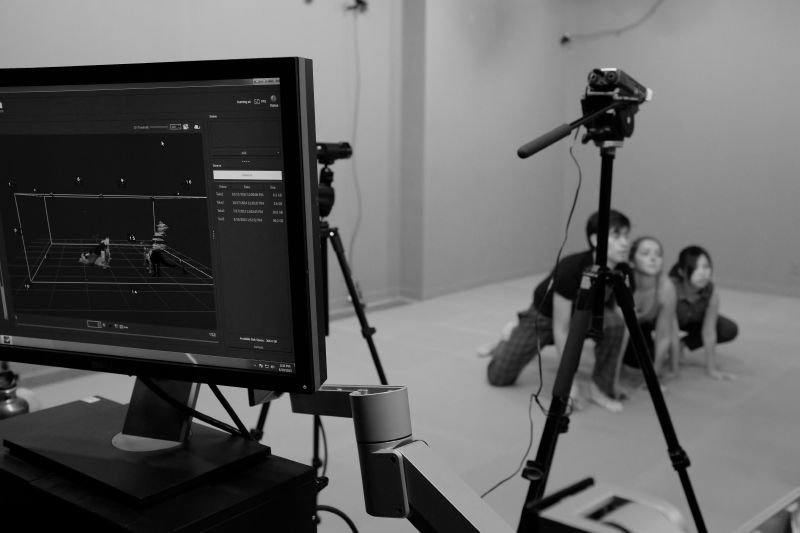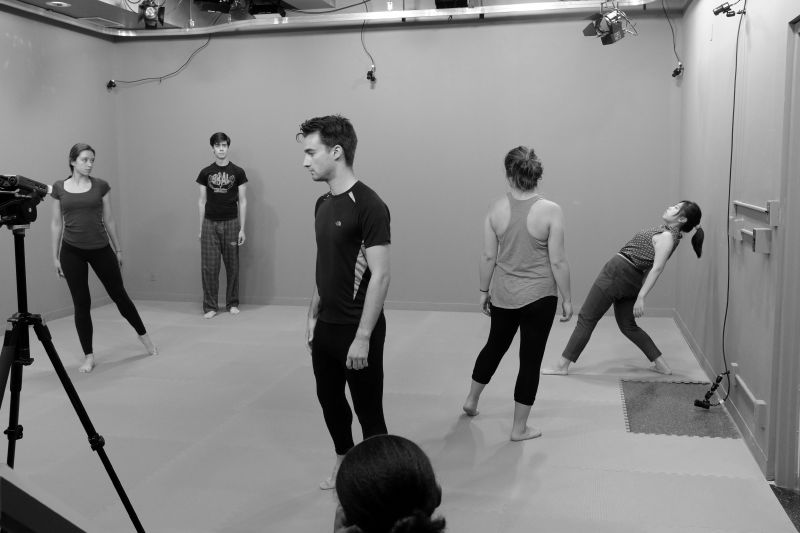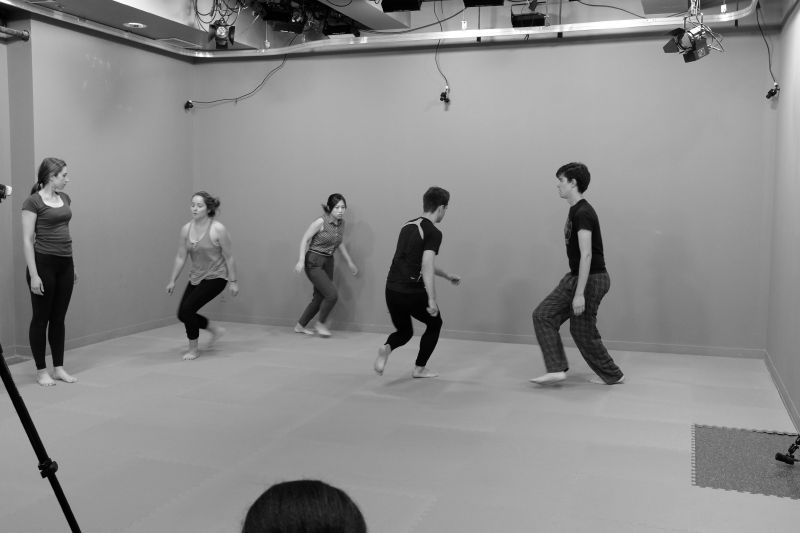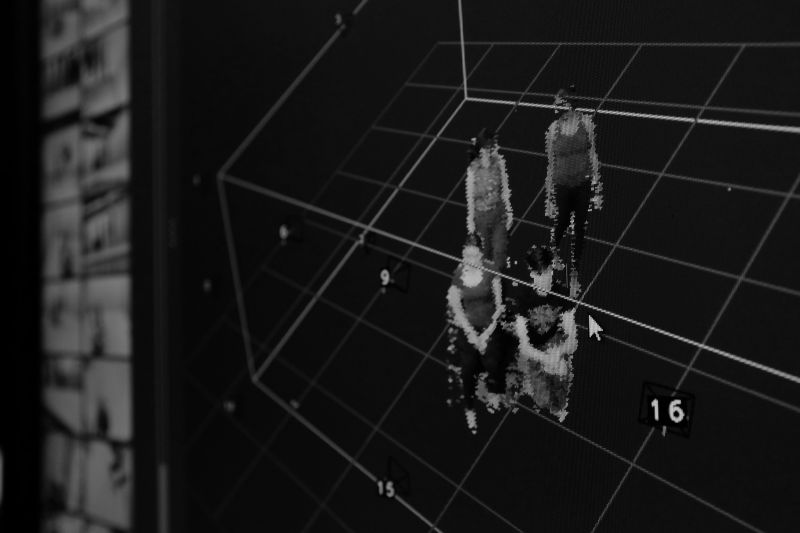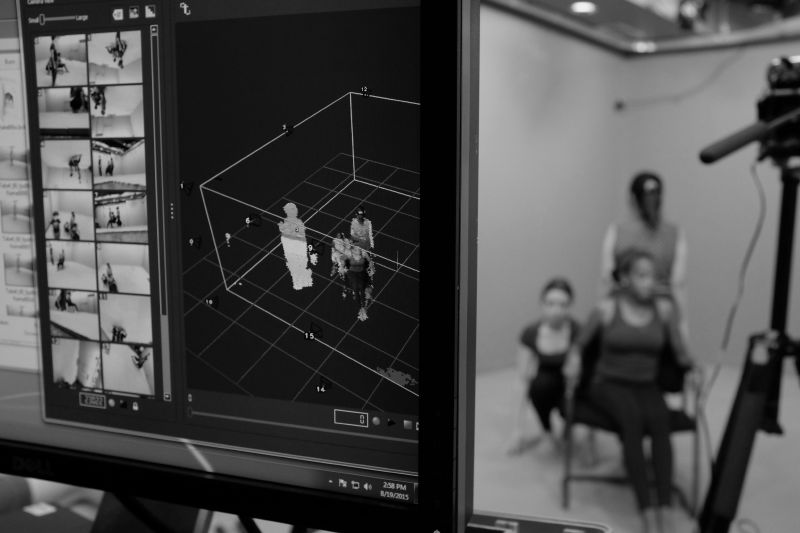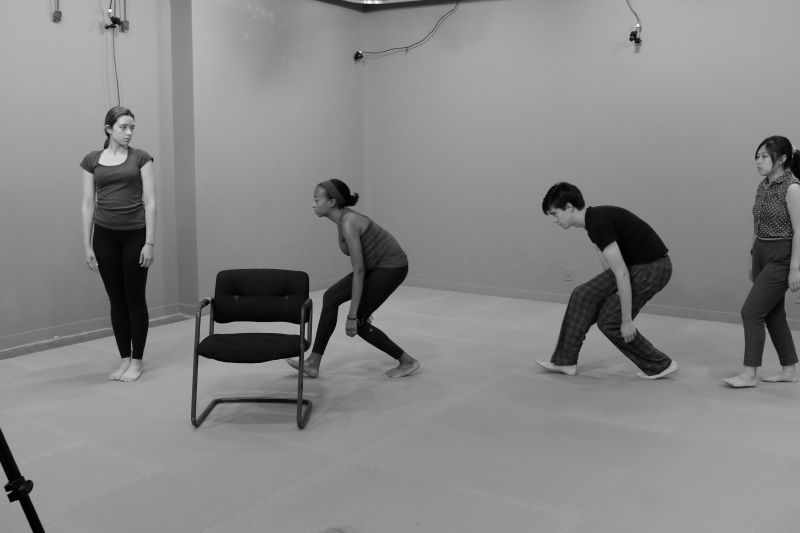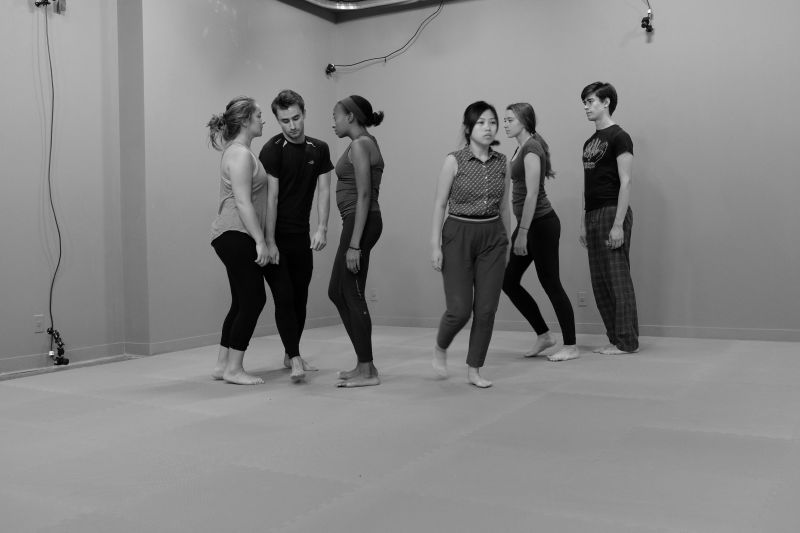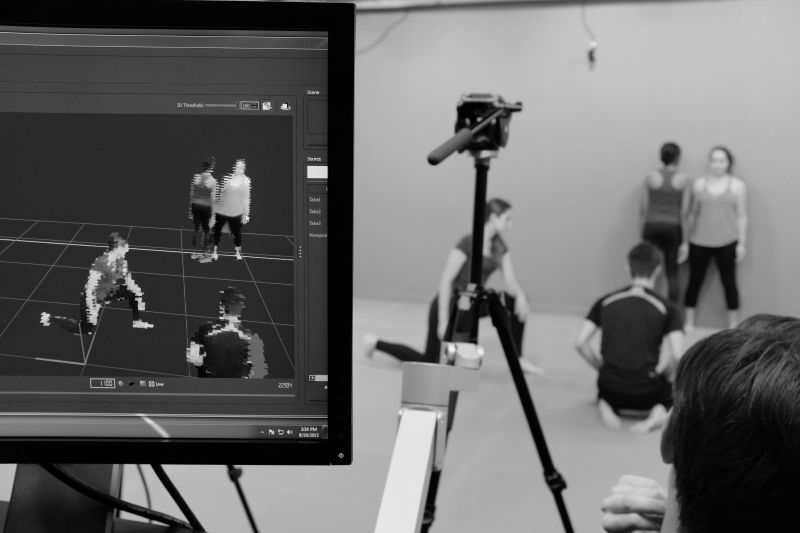Together with a group of Viewpoints actors we have started experimentation for our new project that proposes a collaboration across the domains of ambient interaction design, improvisational theatre, and engineering. The focus is on: Viewpoints improvisation and the design of interactive environments.
The increasing pervasiveness of embedded and mobile digital components in our everyday environment has led to spaces and objects with more fluid than fixed behavior. These objects and spaces are capable of sensing, computing, and acting in real-time; they can change their behavior in function of the state of their own system, their histories of past actions and interactions, the behavior of humans and machines within their reach, as well as environmental parameters.
This project explores a novel approach to enhance today’s physical environments and enable them to dynamically change behavior, to adapt to ad-hoc situations. Urban environments are increasingly pervaded by connected digital technologies (sensors, micro-computers, actuators, displays, etc.), they are no longer static backdrops to human activity but have the potential to become truly interactive elements displaying a dynamic behavior. When developed as second order cybernetic and truly interactive systems, their behavior can be described as improvisational as is ultimately that of their human counterparts. People interacting with these augmented objects and spaces engage in conversational dynamics in which meaning is co-created and space is newly appropriated every time anew for specific situated activity.
Leveraging experimentation with improvisational theatre techniques, we are developing and experimenting with new approaches and prototypes for the analysis and the design of digitally augmented responsive environments. This involves the analysis of actions of improvisational theatre actors in space through a data driven approach (motion capture; location, motion, and gesture sensing) and to develop systems and algorithms capable of driving the behavior of prototypical objects and spatial configurations in a responsive and improvised manner.
This research is part of a broader objective to develop new methods to animate responsive environments for real-world contexts. In particular we are considering new types of workspace that require ad-hoc adaptation to continuously changing programs (manufacturing facilities with adaptable assembly lines, emergency care facilities, industrial kitchens, etc.) as well as spaces of social interaction and entertainment (public spaces, restaurants, etc.).
Principal Investigators
Kristian Kloeckl, Jonathan Carr, Mark Sivak
